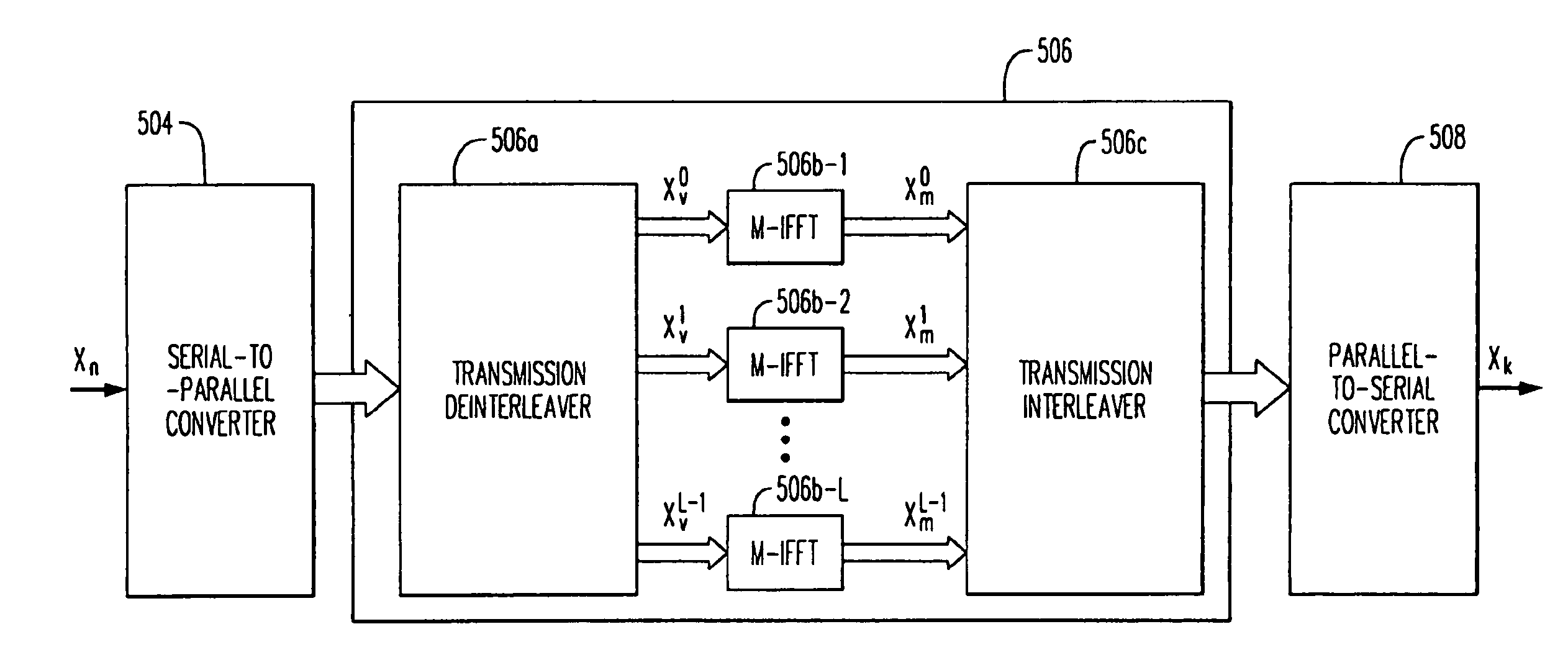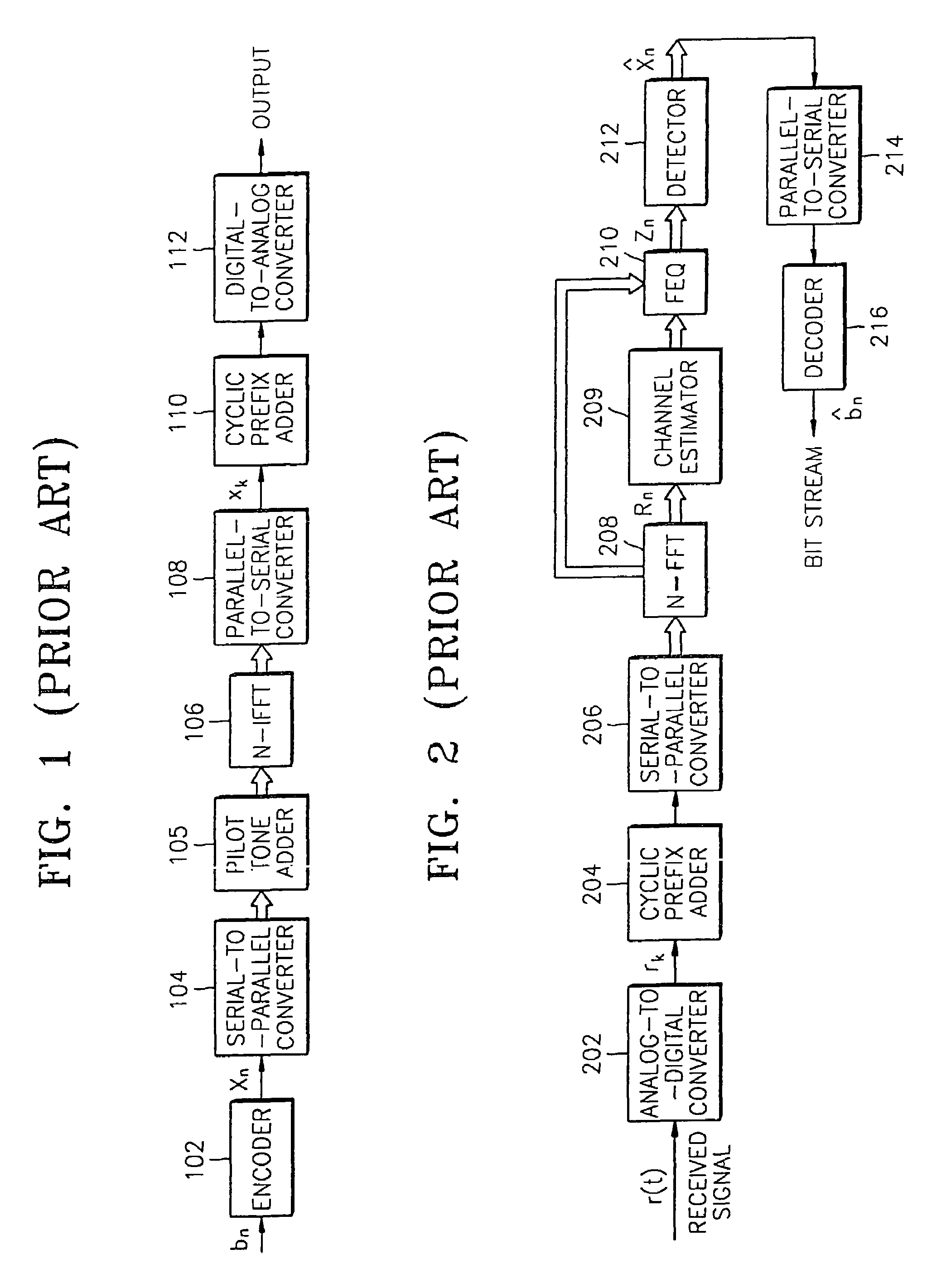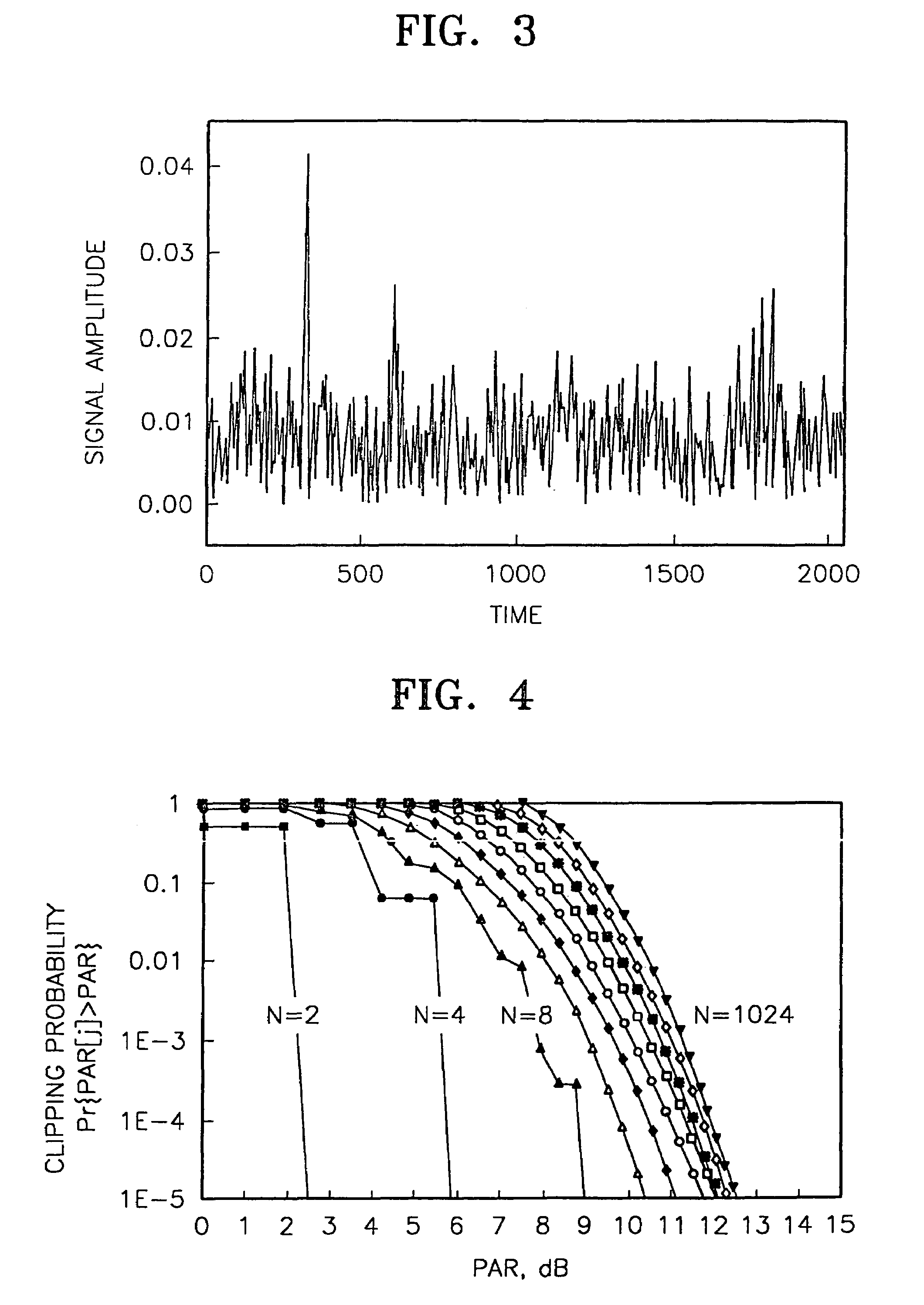Method for transmitting and receiving orthogonal frequency division multiplexing signal and apparatus therefor
a signal and orthogonal frequency division technology, applied in orthogonal multiplex, television system details, baseband system details, etc., can solve the problems of deteriorating performance, clipping or severe quantization noise in the digital-to-analog converter of the transmission terminal, and inability to expect reliable data transmission, etc., to achieve simplified equalizer and reduce par.
- Summary
- Abstract
- Description
- Claims
- Application Information
AI Technical Summary
Benefits of technology
Problems solved by technology
Method used
Image
Examples
Embodiment Construction
[0071]Referring to FIG. 5, a signal transmitting apparatus according to an embodiment of the present invention includes an encoder 502, a serial-to-parallel converter 504, an L-distribution M-point inverse fast Fourier transformer (L*(M-IFFT)) 506, a parallel-to-serial converter 508, a cyclic prefix adder 510 and a digital-to-analog converter 512. The structure of the signal transmitting apparatus of FIG. 5 is similar to that of the conventional signal transmitting apparatus of FIG. 1. That is, the L*(M-IFFT) 506 instead of the N-IFFT 106 of the conventional signal transmitter is used, and the encoder 502, the serial-to-parallel converter 504, the parallel-to-serial converter 508, the cyclic prefix adder 510 and the digital-to-analog converter 512 according to the present invention correspond to the encoder 102, the serial-to-parallel converter 104, the parallel-to-serial converter 108, the cyclic prefix adder 110 and the digital-to-analog converter 112, respectively.
[0072]FIG. 6 sh...
PUM
 Login to View More
Login to View More Abstract
Description
Claims
Application Information
 Login to View More
Login to View More - R&D
- Intellectual Property
- Life Sciences
- Materials
- Tech Scout
- Unparalleled Data Quality
- Higher Quality Content
- 60% Fewer Hallucinations
Browse by: Latest US Patents, China's latest patents, Technical Efficacy Thesaurus, Application Domain, Technology Topic, Popular Technical Reports.
© 2025 PatSnap. All rights reserved.Legal|Privacy policy|Modern Slavery Act Transparency Statement|Sitemap|About US| Contact US: help@patsnap.com



